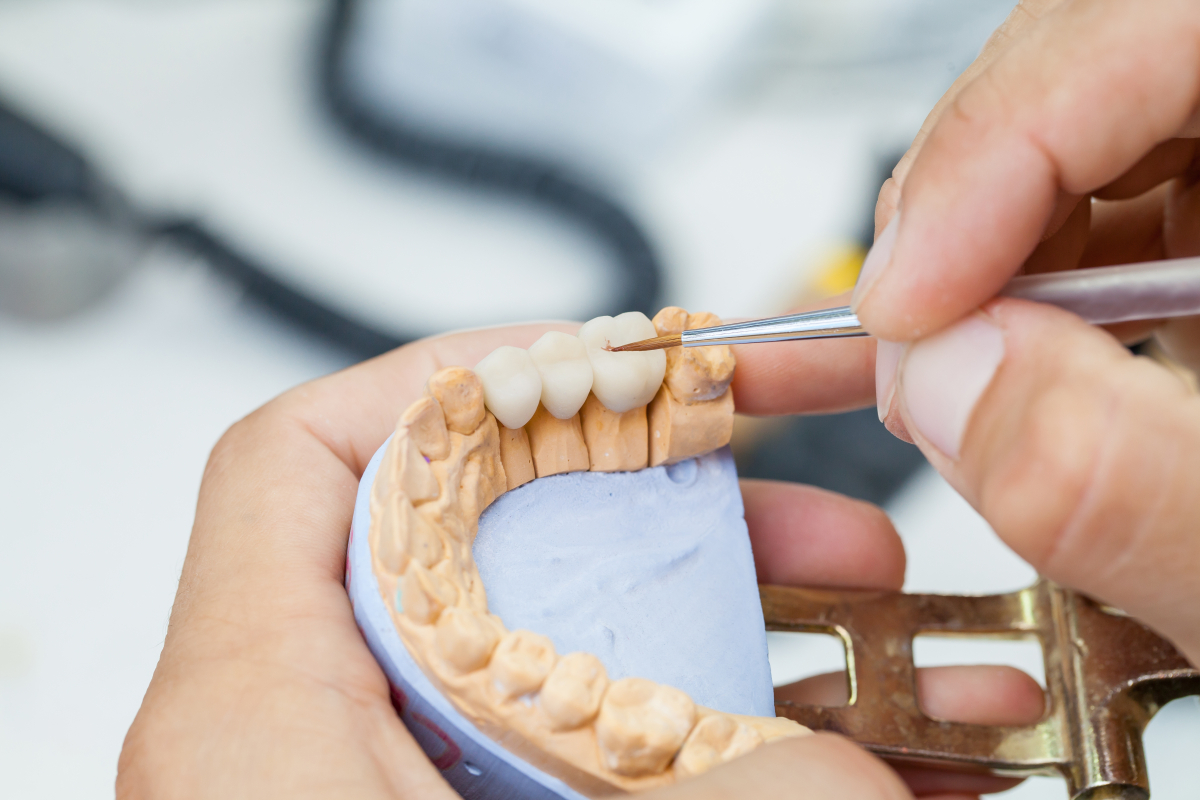Your dentist in Indian Land will conduct an oral examination of the area where the dental bridge is to be installed in order to determine whether you are a candidate for one. Depending on your needs and where the structure is needed, this treatment may be a great option.
The bridge will need to be supported by adjacent teeth that act as anchors, keeping it in position. Once the process is over, you’ll be left with a beautifully full smile. To learn more, please speak with a member of our staff today!
What are Dental Bridges?
In order to restore lost teeth, whether they have fallen out or had to be pulled owing to serious decay or structural damage, dental bridges are a common dental treatment. A dental bridge covers the space created by a lost tooth. The teeth on either side of the gap work as anchors, and a false tooth is used to cover the space in the middle. Dental bridges seem natural after they are in place.
The ideal sort of dental bridge for you will need to be decided upon if your dentist near you determines that you can get one. There are four main kinds of dental bridges, each with a range of possibilities for every situation. The four different kinds of dental bridges are as follows:
Types of Bridges
Standard
The well-known dental bridge is the standard dental bridge. One dental crown is attached to each of the two teeth on either side of the gap, and a fake tooth or teeth fill in the space. In this way, the false tooth “bridges” the gap, while the dental crowns provide anchor points. Traditional bridges are durable , which is one of their key benefits. However, note that the process of getting dental bridges near you requires two adjacent teeth to be modified, which is one of the disadvantages.
Cantilever
Cantilever dental bridges are different in shape from conventional dental bridges in that they only utilize one anchor tooth. They aren’t as commonly utilized as other bridge types, and they can most commonly only be positioned in front of the mouth. Because they can put an undue amount of pressure on a single tooth, cantilever bridges are not suggested for the back of the mouth. With processes, time and money can be saved. However, there are only a few situations in which this kind of bridge may be erected securely.
Maryland
A Maryland bonded bridge has the same key format as a conventional dental bridge but uses porcelain or a metal framework as an anchor instead of dental crowns. With this frame, there is no requirement to change the neighbouring teeth; it is simply attached to the back. In essence, this bridge provides a sensible and more cost-effective replacement for conventional bridges. But the adhesive’s tensile strength decides how durable they are, and metal frameworks can impact teeth.
Implant-Supported
Dental bridges that are backed by dental implants have the same primary design as conventional bridges but are fixed in place by the implants. As a result, dental bridges in Indian Land, implant-supported bridges, can fill spaces left by many missing teeth without the need for neighbouring teeth. Dental implants are known for their power, toughness, and range to reestablish normal function. The placement treatment and recovery time for this kind of dental bridge are more intrusive.
Book Your Appointment Soon!
Your finances, the condition of your remaining natural teeth, the position of your missing teeth, the number of teeth you are missing, your timelines, as well as your overall and dental health, will all play a role in determining which of these dental bridge choices is best for you.



